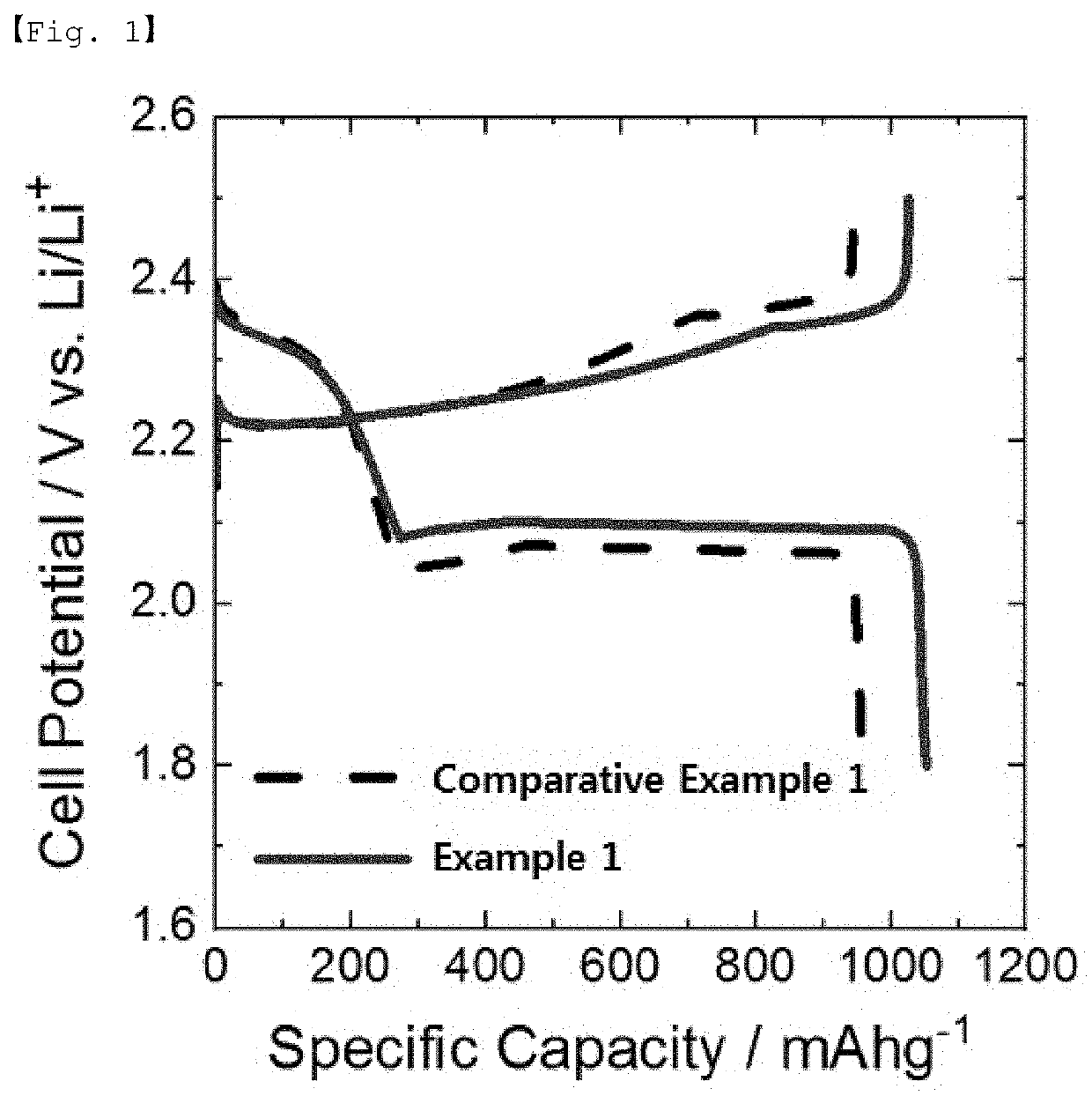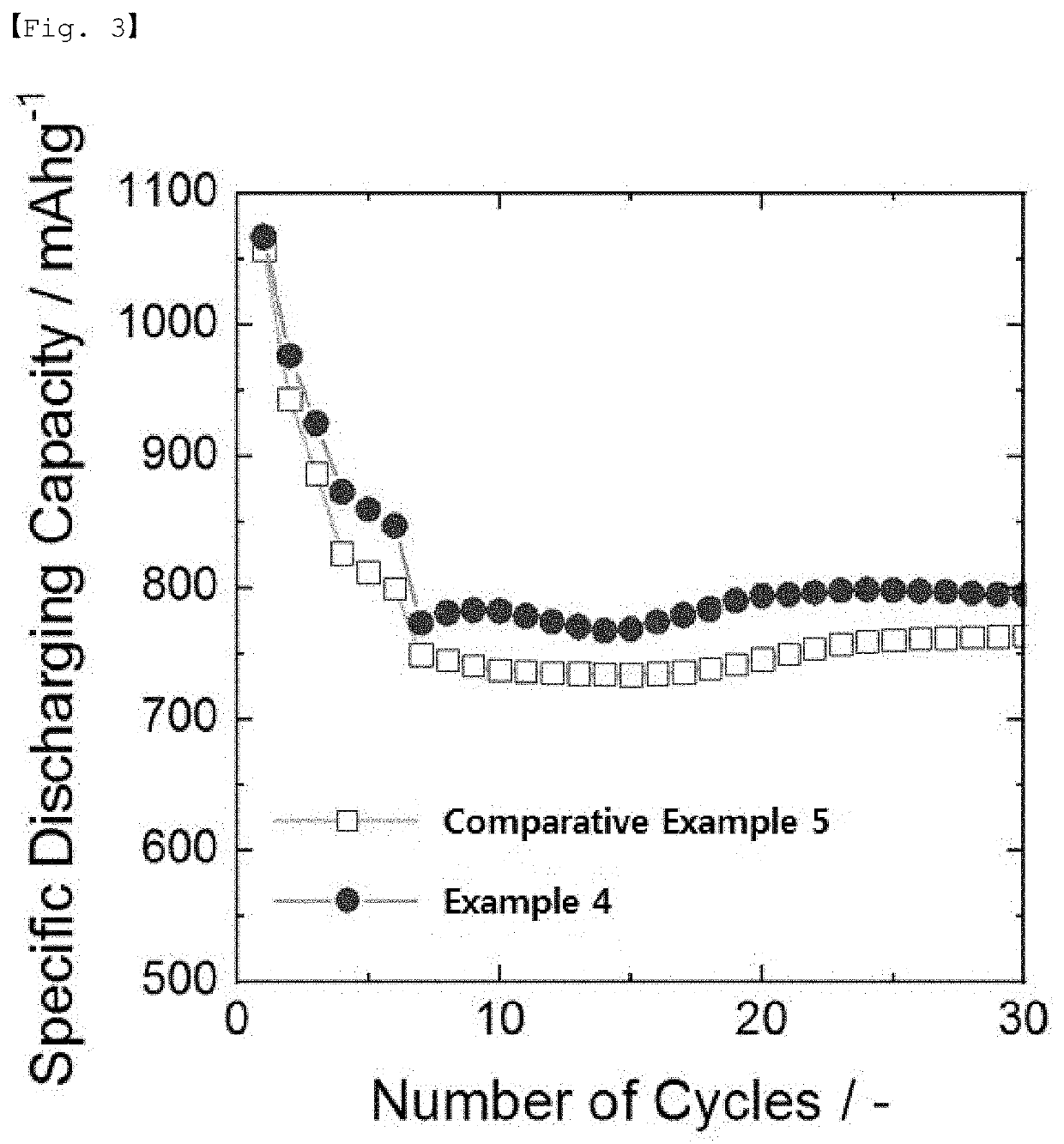Electrolyte and lithium secondary battery comprising same
a technology of electrolyte and lithium secondary battery, which is applied in the direction of electrochemical generators, cell components, cell components, etc., can solve the problems of not being commercialized, volume expansion about 4 times, and different capacity of lithium secondary batteries, so as to suppress a drastic change in lithium ion concentration, inhibit and prevent the growth of lithium dendrite.
- Summary
- Abstract
- Description
- Claims
- Application Information
AI Technical Summary
Benefits of technology
Problems solved by technology
Method used
Image
Examples
example 1
[0093]The lithium metal negative electrode and the S / C positive electrode were positioned to face each other and a polyethylene (PE) separator was placed therebetween, and then, 70 μl of the electrolyte was injected to prepare a lithium-sulfur battery in the form of a coin cell.
[0094]As the electrolyte, an electrolytic solution (E1) containing 0.1% by weight of an additive was used, and the additive was polyethylene glycol methyl ether thiol (mPEG-SH; molecular weight: 800). The electrolytic solution (E1) uses DOL / DME (1:1, v / v) as a solvent and is an electrolytic solution containing 1 M LiTFSI and 3% by weight of LiNO3 (DOL: dioxolane; DME: dimethoxyethane).
example 2
on of Lithium-Lithium Symmetric Battery
[0096]The lithium metal negative electrode and the lithium metal positive electrode were positioned to face each other and a polyethylene (PE) separator was placed therebetween, and then, 100 μl of the electrolyte was injected to prepare a lithium-lithium battery in the form of a coin cell.
[0097]As the electrolyte, an electrolytic solution (E2) containing 0.1% by weight of an additive was used, and the additive was polyethylene glycol methyl ether thiol (mPEG-SH; molecular weight: 800). The electrolytic solution (E2) uses DOL / DME (1:1, v / v) as a solvent and is an electrolytic solution containing 1 M LiTFSI (DOL: dioxolane; DME: dimethoxyethane).
example 3
on of Lithium-Sulfur Battery
[0099]The lithium metal negative electrode and the S / C positive electrode were positioned to face each other and a polyethylene (PE) separator was placed therebetween, and then, 70 μl of the electrolyte was injected to prepare a lithium-sulfur battery in the form of a coin cell.
[0100]As the electrolyte, an electrolytic solution (E1) containing 0.1% by weight of an additive was used, and the additive was polyethylene glycol methyl ether thiol (mPEG-SH; molecular weight: 2,000).
PUM
| Property | Measurement | Unit |
|---|---|---|
| total weight | aaaaa | aaaaa |
| stability | aaaaa | aaaaa |
| weight | aaaaa | aaaaa |
Abstract
Description
Claims
Application Information
 Login to View More
Login to View More - R&D
- Intellectual Property
- Life Sciences
- Materials
- Tech Scout
- Unparalleled Data Quality
- Higher Quality Content
- 60% Fewer Hallucinations
Browse by: Latest US Patents, China's latest patents, Technical Efficacy Thesaurus, Application Domain, Technology Topic, Popular Technical Reports.
© 2025 PatSnap. All rights reserved.Legal|Privacy policy|Modern Slavery Act Transparency Statement|Sitemap|About US| Contact US: help@patsnap.com



